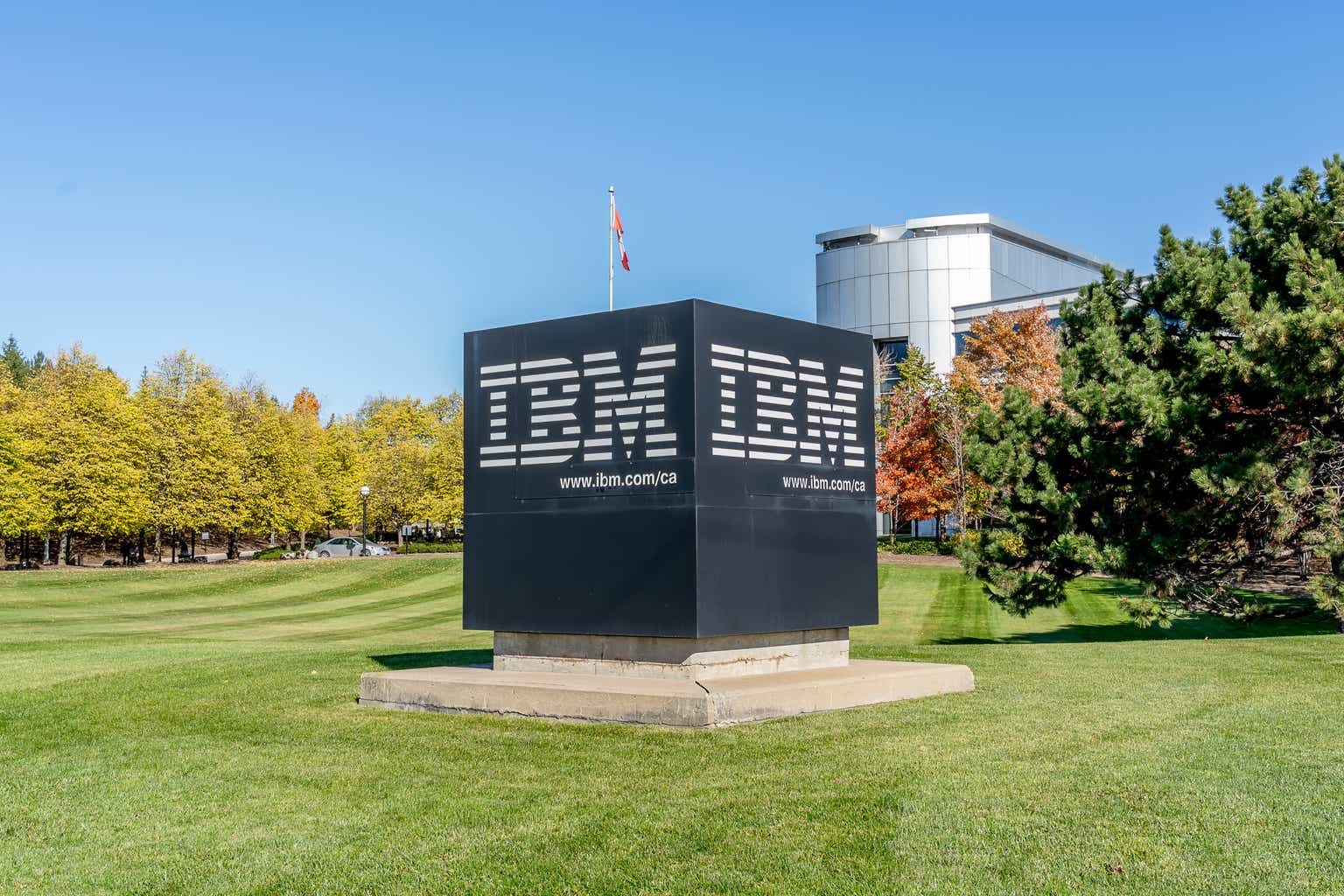In April, I concluded that there was nothing to see here in the case of shares of IBM (NYSE:IBM). This came as the company was continuing to work on its transformation, but revenue growth had come to a standstill in the fourth quarter.
While earnings power improved, earnings remained heavily adjusted, as the balance sheet remained leveraged and complicated. All this made me cautious, with few reasons to be upbeat other than a more than 5% dividend yield.
Creating Some Perspective
Hard to believe, but the peak of IBM (at least if we look at the share price) goes back a decade ago as shares traded around the $200 mark in 2013. What followed has been a decade of stagnation, with shares largely trading in a $100-$150 range in recent years.
The reason for that was simple: a multi-year transitioning progressed slowly, revealing that adjusted earnings were not always equal to realistic earnings (in part due to substantial liabilities) as some part of the business did okay, but many parts struggled.
To make a big step in its transition IBM cut a $34 billion deal for Red Hat, but even that the deal has really failed to offset a repetitive picture of sluggish sales and earnings. Picking up the story in the pandemic year of 2020, the company saw full year sales fall from $77 billion to $73 billion, with GAAP earnings down from $9.4 billion to $5.6 billion.
That however was ahead of the divestment, or better spin-off of its IT infrastructure business, Kyndryl (KD). While its $17 billion sales number was big, the lack of profitability made that its shares were valued at a modest price and a detraction to margins and growth of IBM. Pro forma for this deal, IBM had shrunken to $57 billion in 2021, but its growth profile should have improved, with the focus on should.
Zooming In On Recent Performance
When I picked up coverage again in April of this year, shares traded at $128. In January of this year, IBM posted a 5% increase in full year sales to $60.5 billion, despite some dollar headwinds seen last year. Earnings remain complicated as 2022 earnings came in at $9.13 per share (of course adjusted) with GAAP earnings only amounting to $1.95 per share. Most of the gap comes from a $5.41 per share retirement charge, as well as deal related charges and other items.
Given the nature of the business, the balance sheet remains complicated and sizable with $105 billion in assets, comprised out of relatively little equity and a lot of goodwill. The fact that fourth quarter sales were dead flat and earnings remained complicated made it hard to see great appeal, other than a $6.60 per share dividend. This was equal to a 5.2% dividend yield at the time (which by now has been hiked to a quarterly payout of $1.66 per share), with the yield now hovering around 5.0% at this point in time.
Amidst all this, it felt as if the multi-year road to simplify operations was still continuing as the overall valuation felt fair, but little immediate capital appreciation was seen.
And Now?
Since April, shares of IBM have traded in a $120-$140 range, now trading at $133 per share. Later in April, IBM posted first quarter earnings results with sales coming in rather flattish at $14.25 billion, in fact sales were up 0.4% on the year. GAAP earnings of $1.02 per share improved twenty cents on the back of higher gross margins and higher other income, as the share count was pretty flat, in fact up a fraction. Adjusted for some other items, adjusted earnings were actually down four cents to $1.36 per share.
The debt situation is very complicated to tell. If we consider cash, marketable securities, financing receivables and pension assets as cash and alike as consider regular debt, and pension liabilities as financial liabilities, I arrive at a substantial $28.8 billion net debt load. Moreover, the company has seen the balance sheet expand to $133 billion, without an associated increase in equity. With 908 million shares trading at $133, the company commands a $120 billion equity valuation here.
To ignite some further growth, IBM announced a $4.6 billion deal for Apptio by the end of June. The deal for the financial and operational IT management and optimization software player should boost the growth profile and service offerings to IBM´s clients, but unfortunately few financial details on the contribution were announced. While the deal really is a bolt-on deal, the financial rationale is still a bit hard to find, as likely IBM is paying steep multiples to buy the business.
Still Not Upbeat
Given the softer first quarter, a substantial debt load and a deal which raises some eyebrows, I am still not impressed with IBM here. Instead of simplifying the business, the company is adding again in terms of a deal, but also growing the still complicated balance sheet, making it hard to see structural growth, which makes me cautious.
While AI could be a driver for the sector, and IBM has Watson, the reality is that it feels as if IBM is lagging compared to its peers, which makes that AI could even create a risk: that of faster market share losses of IBM vis-a-vis its peers. Amidst all this, I find it very easy to avoid the shares here.
Read the full article here





